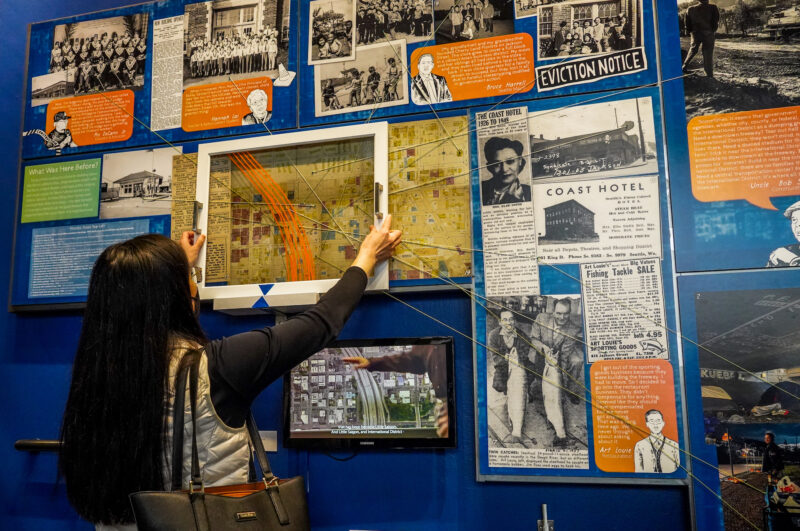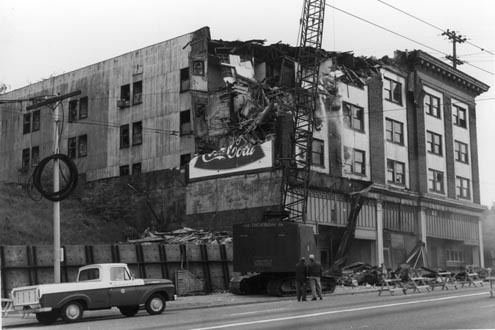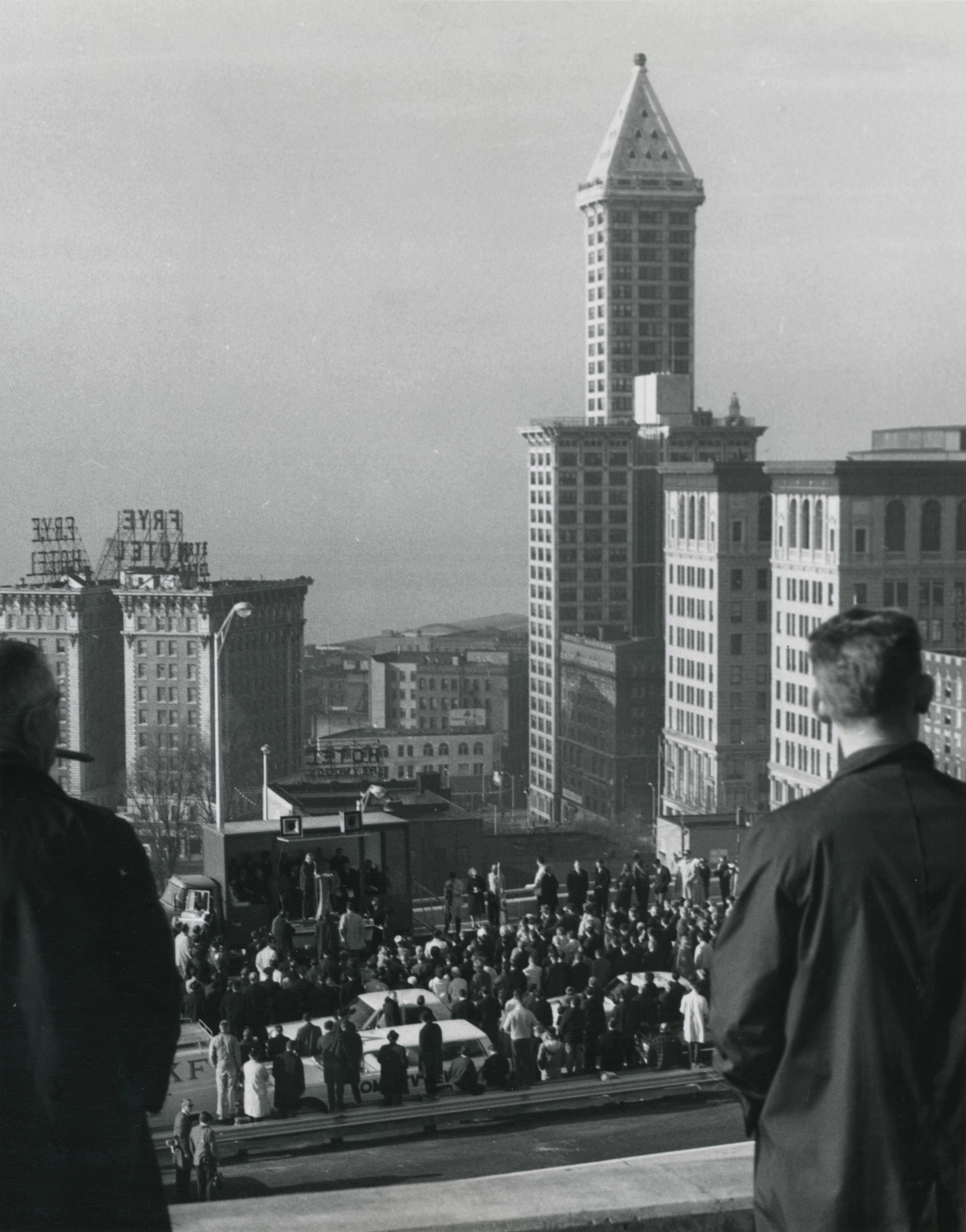Nobody Lives Here Reflects the International District’s Past, Present, and Future
Review of Nobody Lives Here at Wing Luke Museum
Written by TeenTix Newsroom Writer Lorelei Schwarz and edited by Teen Editorial Staff Member Anna Melomed

The loud and constant sound of highway traffic plays over speakers at the Nobody Lives Here exhibit, but they aren’t the first thing you’d notice. After all, the sound is just a continuation of what’s heard through the entirety of the Chinatown-International District (CID): I-5, drowning out conversations across the street, live music, and storefront doorbells.
Multimedia artist and historian Tessa Hulls worked with the Wing Luke Museum (which was established shortly after I-5 was built through the CID in the early 1960s), to create an engaging and extensive collection. Her countless photos, newspaper articles, and interview transcripts explain how the highway fundamentally altered the CID and its residents’ lives.

The exhibit is just past the front desk of the museum, situated around a small staircase. It progresses from right to left, moving up the stairs as the content moves later (from before the freeway was constructed nearly to the present day). It also broadens in scope; initially, we see snippets of life in the neighborhood, photos of kids on bicycles, and local fishing contests. Throughout the exhibit, these depictions become fewer and further between, with a shift in tone as it moves to the city’s freeway network plans and covenants around the country. The exhibit reflects how personal stories, tight-knit communities, and individuals are lost in the path of progress. However much of the exhibit was centered around preservation and counteracting the erasure of the neighborhood; thus, it felt as though it was missing some of those personal touches that were initially such a strong point.
Additionally, the content seemed at times disconnected: for example, the timeline was interrupted to briefly discuss the occupation and eventual transformation of Indigenous land. Here, they covered the highly restrictive covenants that pushed Indigenous people out of the city and onto Ballast Island. Though fascinating and relevant, it may have been more effective to maintain a chronological structure, beginning with information on Indigenous stories (that which came before Seattle as we know it) or opting to work this equally complex history into the exhibit as a whole.
On the other hand, the most successful aspects of the exhibit lie in its interactive elements. It’s a wide-ranging multimedia project in terms of content and images, but interaction is also seamlessly integrated. A 25-location self-guided walking tour accompanying Nobody Lives Here allows further exploration of the neighborhood and I-5’s current effects. Within the exhibit, visitors can hold up plexiglass to a CID map to see what areas construction affected. One wall is encompassed by a map that lets you shine a flashlight to find such people and items. There’s even an opportunity for attendees to voice their visions for the CID. “What could have been? What still can be?” it asks, prompting people to answer the questions on sticky notes affixed to a glass wall. One blue note read, “Prioritize people who live here over people coming in and parking for the football game.” Having just taken a light rail train filled to the brim with Seahawks fans, the irony wasn’t lost on me.
This element, along with the rest of the interactive ones, makes the exhibit feel more connected to the CID as it exists today. They serve to connect the history to today’s community, encouraging visitors to consider the impacts and implications of I-5. They consider the future, too, and highlight the fact that active decisions have to be made in favor of the CID, as opposed to the vague “greater good” or rest of the city.

The comprehensive exhibit is worth a visit, but it shouldn’t be viewed in isolation. Walk around the International District, take a moment to sit on a park bench, or get a bite to eat. Let Nobody Lives Here guide your perception of the neighborhood, and see the context; but more importantly, see the people.
Lead photo credit: Exhibition view of Nobody Lives Here, Courtesy of Wing Luke Museum
The TeenTix Newsroom is a group of teen writers led by the Teen Editorial Staff. For each review, Newsroom writers work individually with a teen editor to polish their writing for publication. The Teen Editorial Staff is made up of 5 teens who curate the review portion of the TeenTix blog. More information about the Teen Editorial Staff can be found HERE.
The TeenTix Press Corps promotes critical thinking, communication, and information literacy through criticism and journalism practice for teens. For more information about the Press Corps program see HERE.


